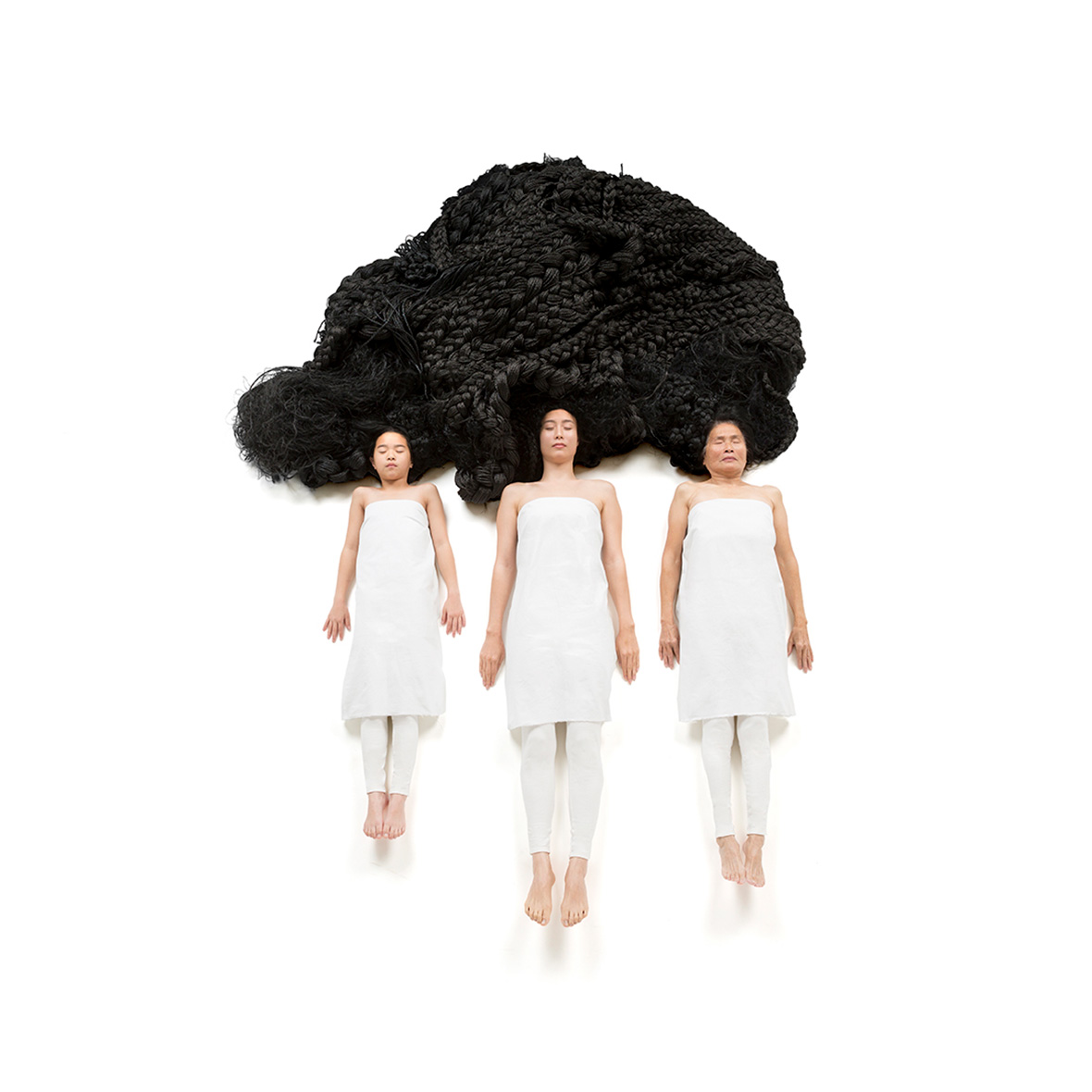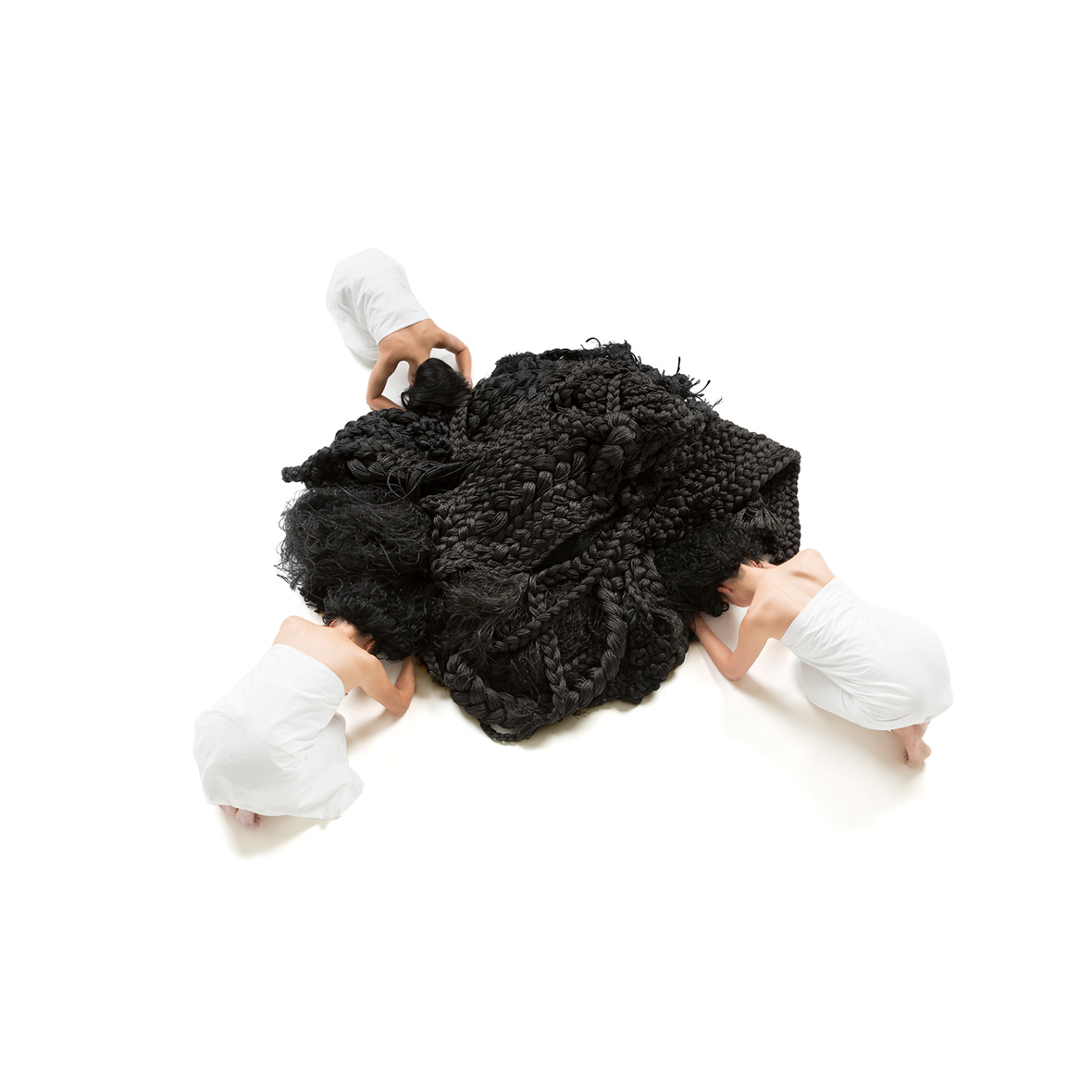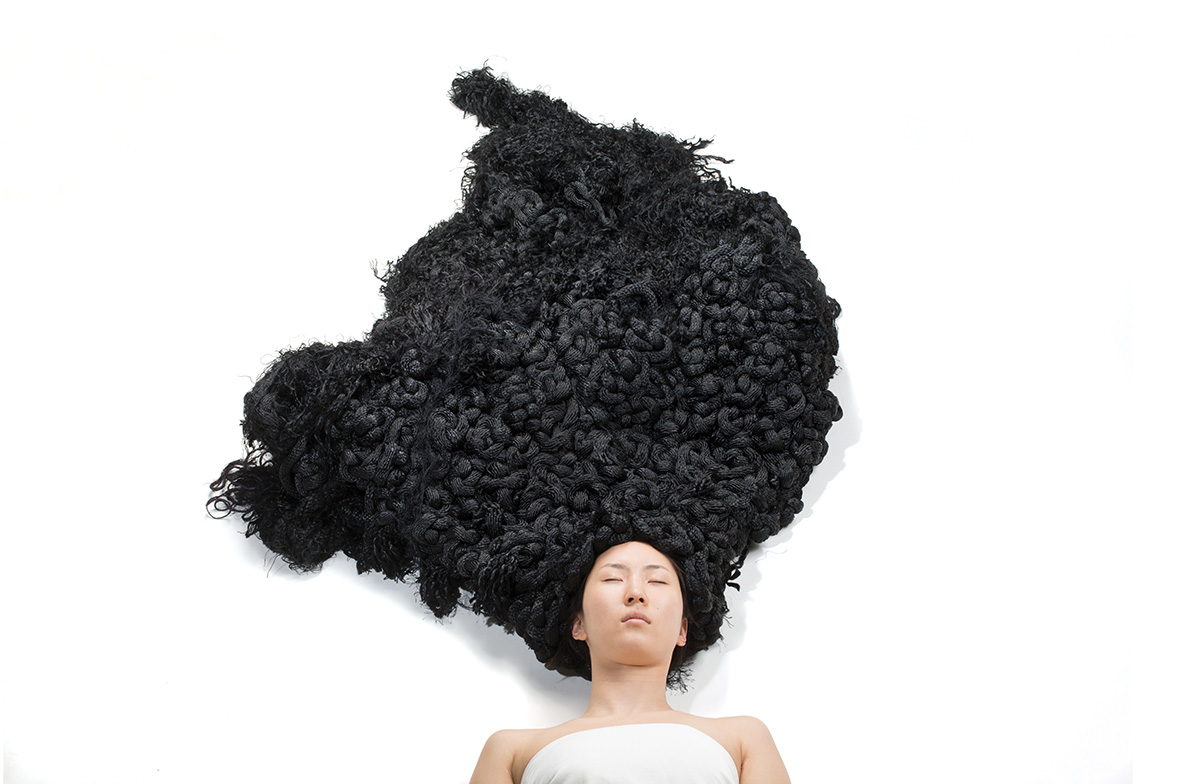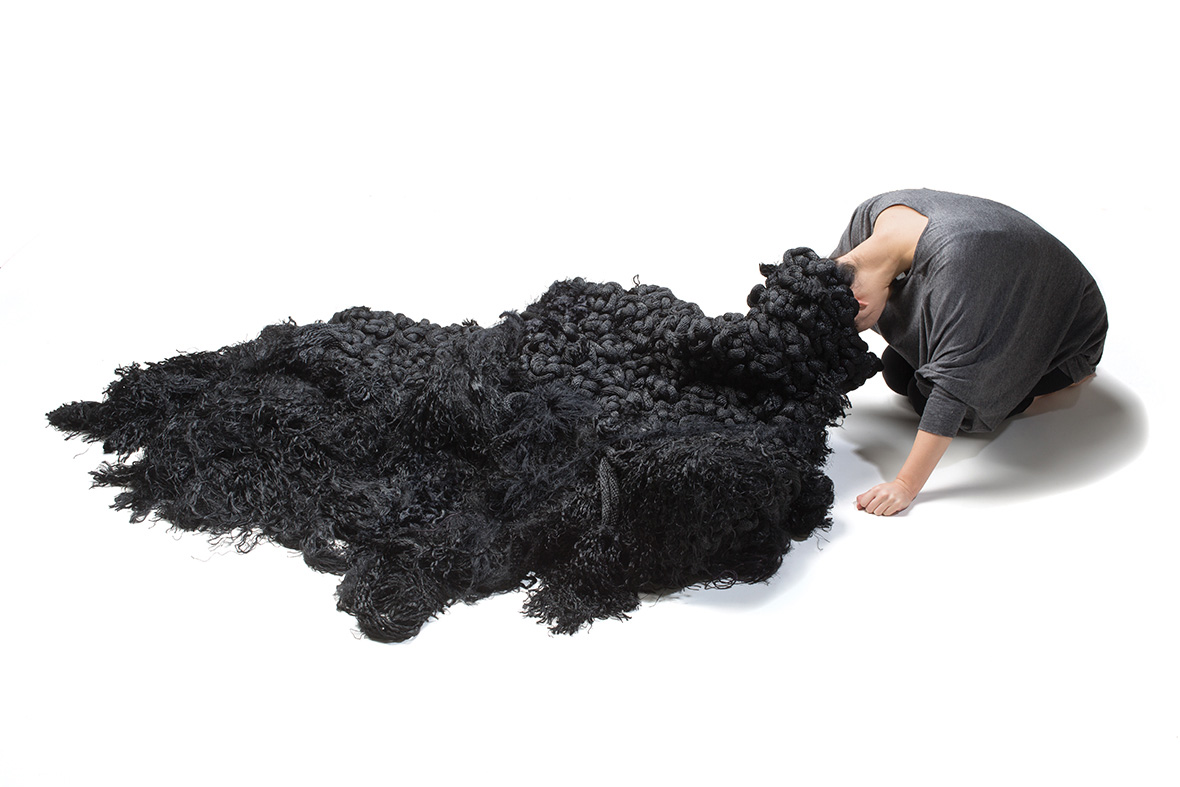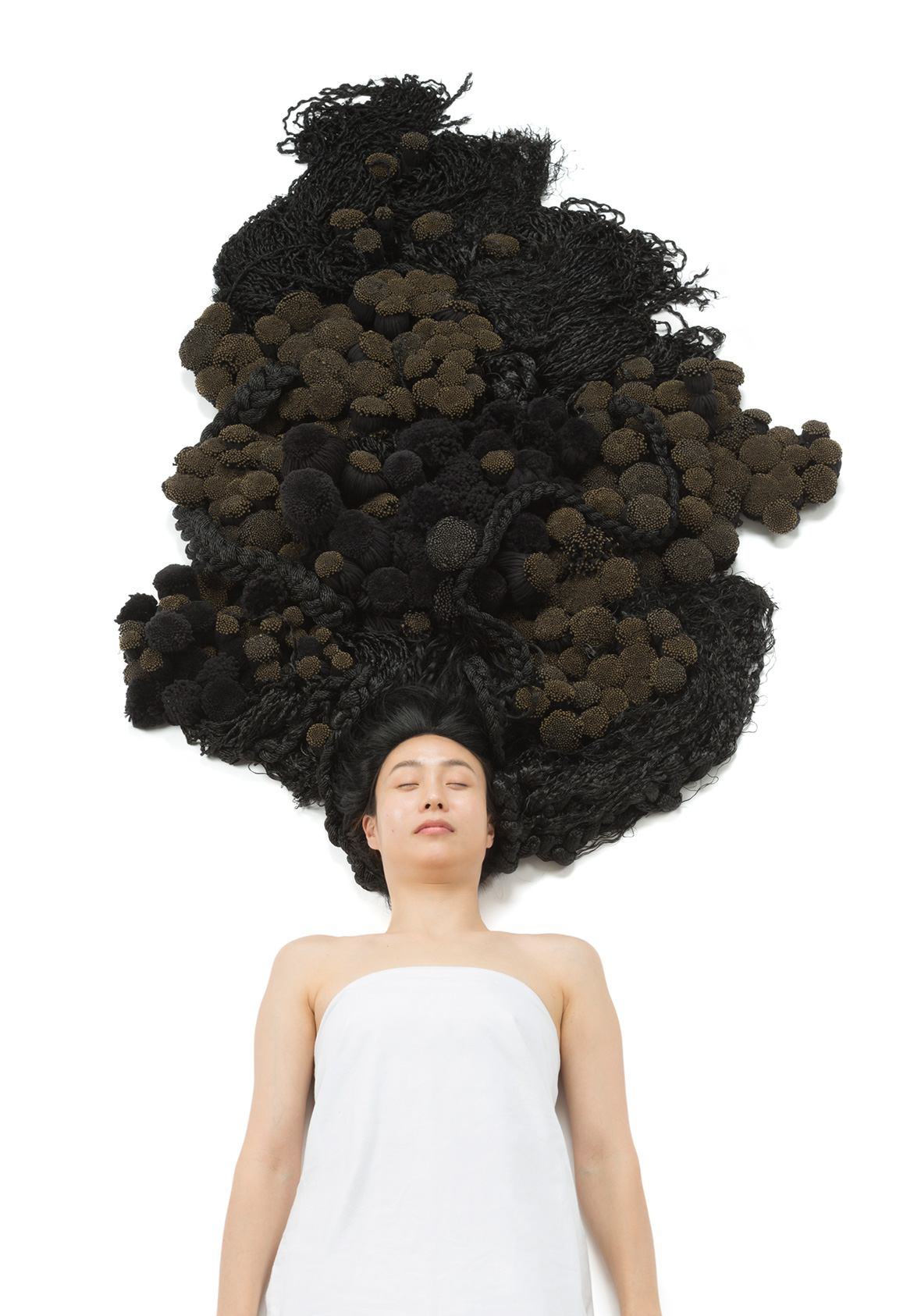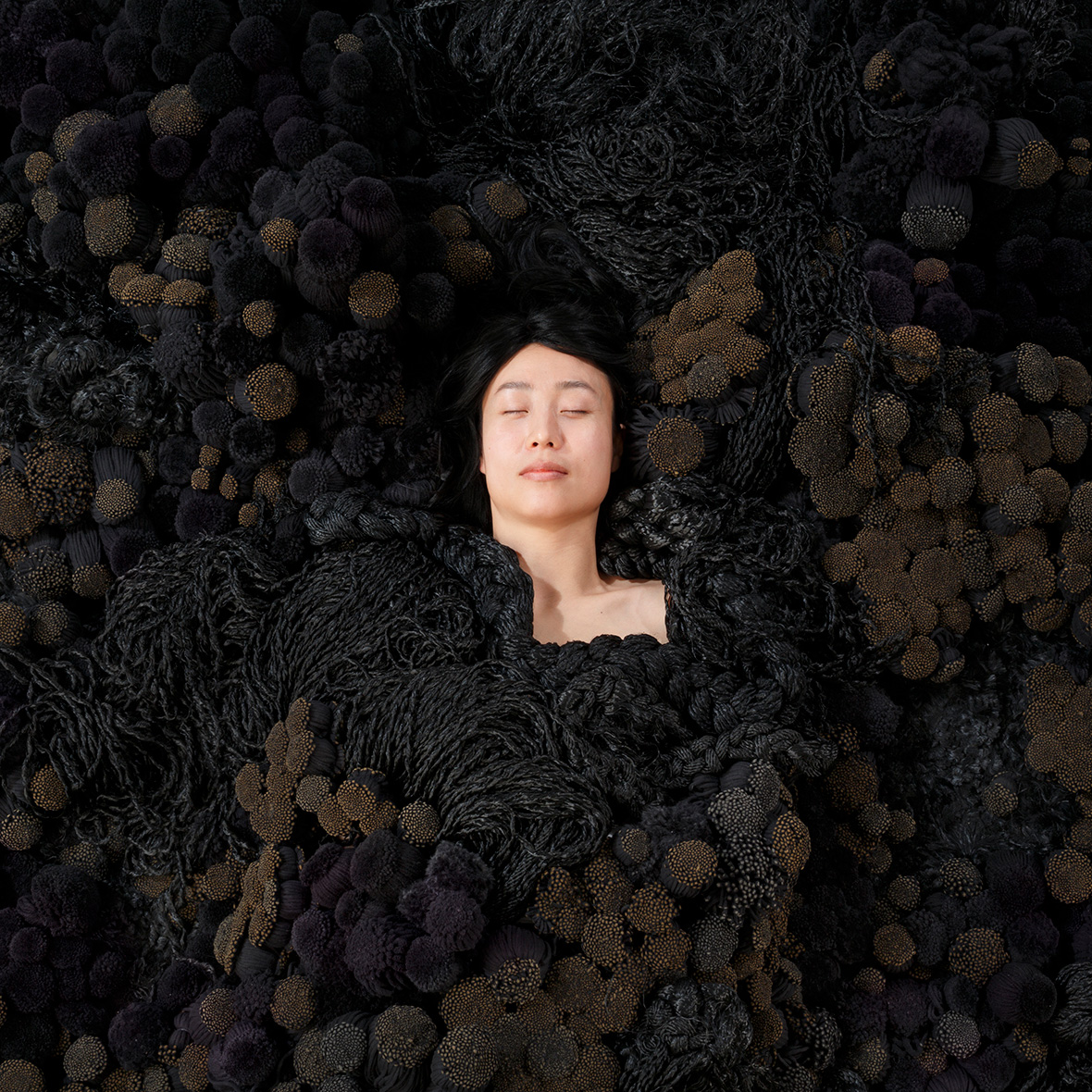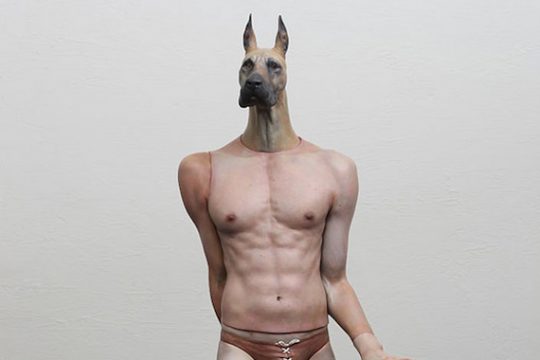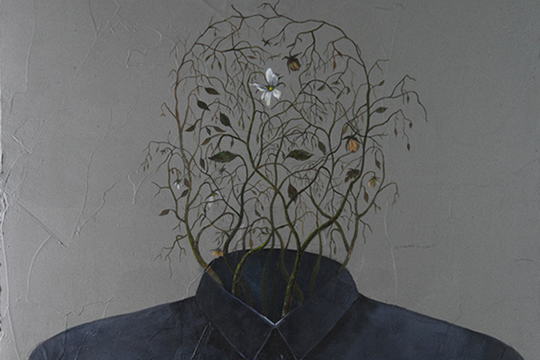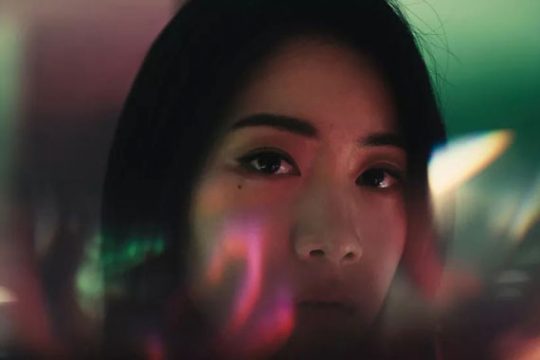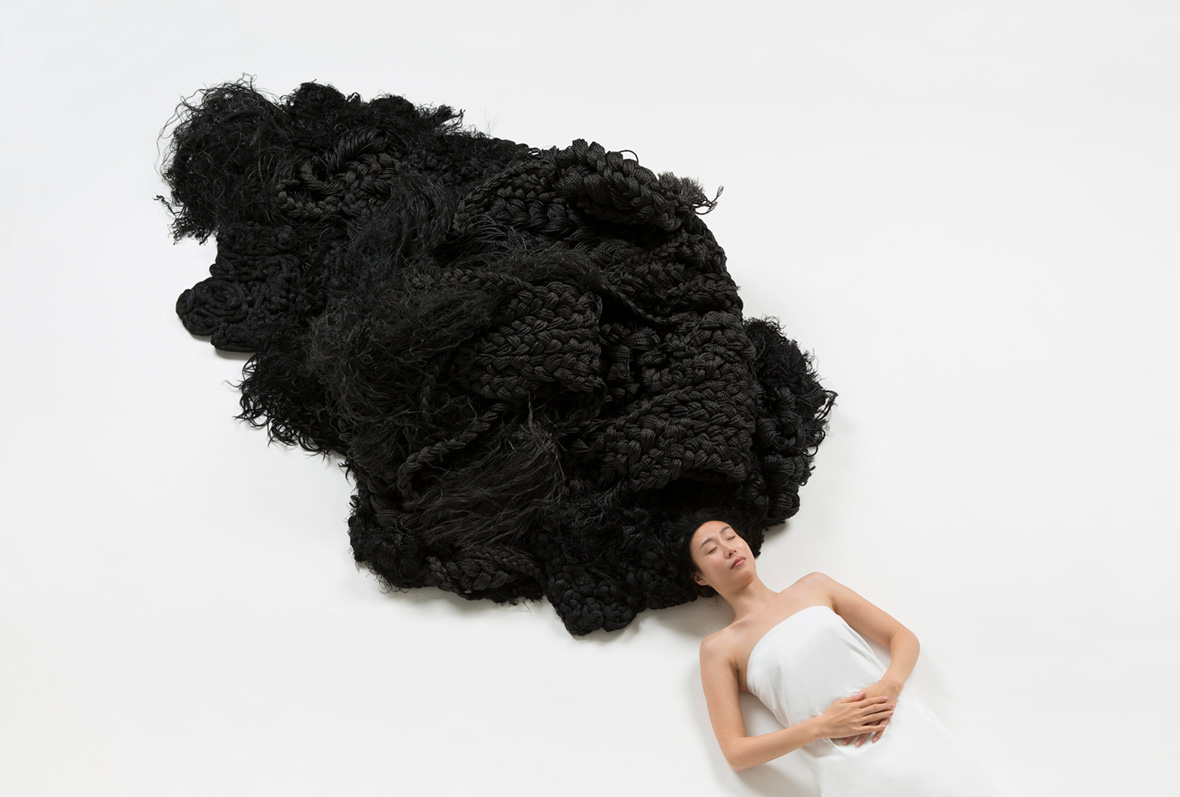
Hair is often the first thing we notice about a person. Gender, ethnicity, personality—we can make judgments about these characteristics from a mere glance at their hair. This is because however we choose to style it—whether it’s long or short, straight or curly, dyed or natural—we’re displaying a conscious decision. More often than not, this choice is the beginning of a story.
Yuni Kim Lang, a Korean-American artist based in Michigan, is fascinated by hair. Though she was born in Korea, she spent most of her childhood in various cities in China before attending an international school with a Western curriculum. She identifies as a “third-culture kid,” a term for people who have grown up in a culture different from that of their parents, and she often felt caught between three different sets of cultural expectations. “Every summer, when I went back to visit Korea, my heart would start beating faster the moment the airplane landed. I had this idea of what a Korean girl looked like and needed to be like. But what if I couldn’t fit into that box? It was a physical thing for me. I could literally feel how my body started to feel uncomfortable.”
头发往往是我们注意到一个人的第一件事。我们只需看一眼头发,就可以做出对方性别、种族、甚至是性格等特征的判断。这是因为每个人都有设计它的选择——无论是长发或短发,直发或卷发,染色或自然发色——都产自于我们有意识的决定,而这通常开展了一个人往后的生活故事。
住在密歇根州的韩裔美籍艺术家 Yuni Kim Lang,对头发有着很深的着迷。虽然她出生在韩国,但她在中国不同城市度过了大半的童年时光,接着再进入一所西方教育的国际学校。她认为自己是一个“第三文化小孩”,对于在与父母不同的文化中成长的人来说,她经常感到自己陷入三种不同的文化期望中。“每年夏天,当我回到韩国时,我的心脏就会在飞机着陆的那一刻开始快速跳动。我执着于‘一个韩国女孩应该看起来怎么样?’这样的想法。如果我不能融入呢?这对我来说也造成身体上的影响。我真的可以感到自己开始感觉不舒服。”
Lang’s best-known project, Comfort Hair, is the manifestation of that discomfort. The sheer mass of tangled knots pays homage to gache, heavy wigs formerly worn by Korean women to signify social status and beauty. The weight is both literal and figurative, and Lang has said she identifies with the story of a 13-year-old bride whose neck snapped under the weight of her gache. While cultural expectations can be beautiful, rooted in deep traditions, they can also be burdens. “Comfort Hair is about wanting to tell the story of this massive thing on top of my head that encompasses so much, and using it as a conversation starter to dig deeper into our stories,” she says. “It’s the perfect material that everyone understands to be personal.”
Yuni Kim Lang 最著名的项目《Comfort Hair》(《慰借之发》),正是这种文化不适的延伸。大量纠缠的发结,向古代韩国女性用以宣示社会地位和美丽的重型假发“加髢”致敬。这种重量既是象征性的,也是真实有形的。她说,曾经有一个13岁的小新娘的脖子,在加髢的重压下折断。虽然文化期望可以是美丽的,根植于深厚的传统,但它们也可能是重担。“《Comfort Hair》就是想要讲述这个巨大的命题,涵括了很多的东西,并借以开启一段对话,深入挖掘属于我们自己的故事。”她说,“头发正是一个恰好的素材,每个人都可以理解它的私密性。”

The title also alludes to the “comfort women” taken as sex slaves by the Japanese army during World War II. Comfort Hair is intended to be experienced live as a performed work, with Lang wearing the pieces and lying quietly in a meditative state. Her presence highlights her connection to a complex history that contributes to her identity. Lang states that memory is an essential part of her work, and that hair can be thought to represent a “collective memory.” In one image, three women of different generations share the same web of dense, interwoven, black strands, linking hair with the triumphs and hardships of a community.
Hair is paradoxical. It is neither living nor dead—we cannot feel it, but it nonetheless grows out of our bodies. Similarly, our histories cannot be changed, yet they can be modified, shaped, and worn in different ways.
这个项目的命名,同时也暗示了二次世界大战期间被日本军队视为性奴的“慰安妇”(Comfort Women)。《Comfort Hair》旨在让观众现场体验,Yuni Kim Lang 戴上巨大的发结,静静地躺在冥想状态。她的存在强调了自己、与造就了她的复杂历史两者之间的连结。她说,记忆是她创作中不可或缺的一部分,头发可被视为一种“集体记忆”。在其中一张照片中,三位不同世代的女性拥有相同密集、交织缠绕的黑色织线,将头发与这一群体的伟大与艰辛,紧紧联系在一起。
头发本是矛盾的,它既不死也不活,我们无法感受到它,但它仍然从我们的身体中生长出来。同样地,我们的历史不能改变,但它们可以通过不同的方式进行修改、塑造和磨合。
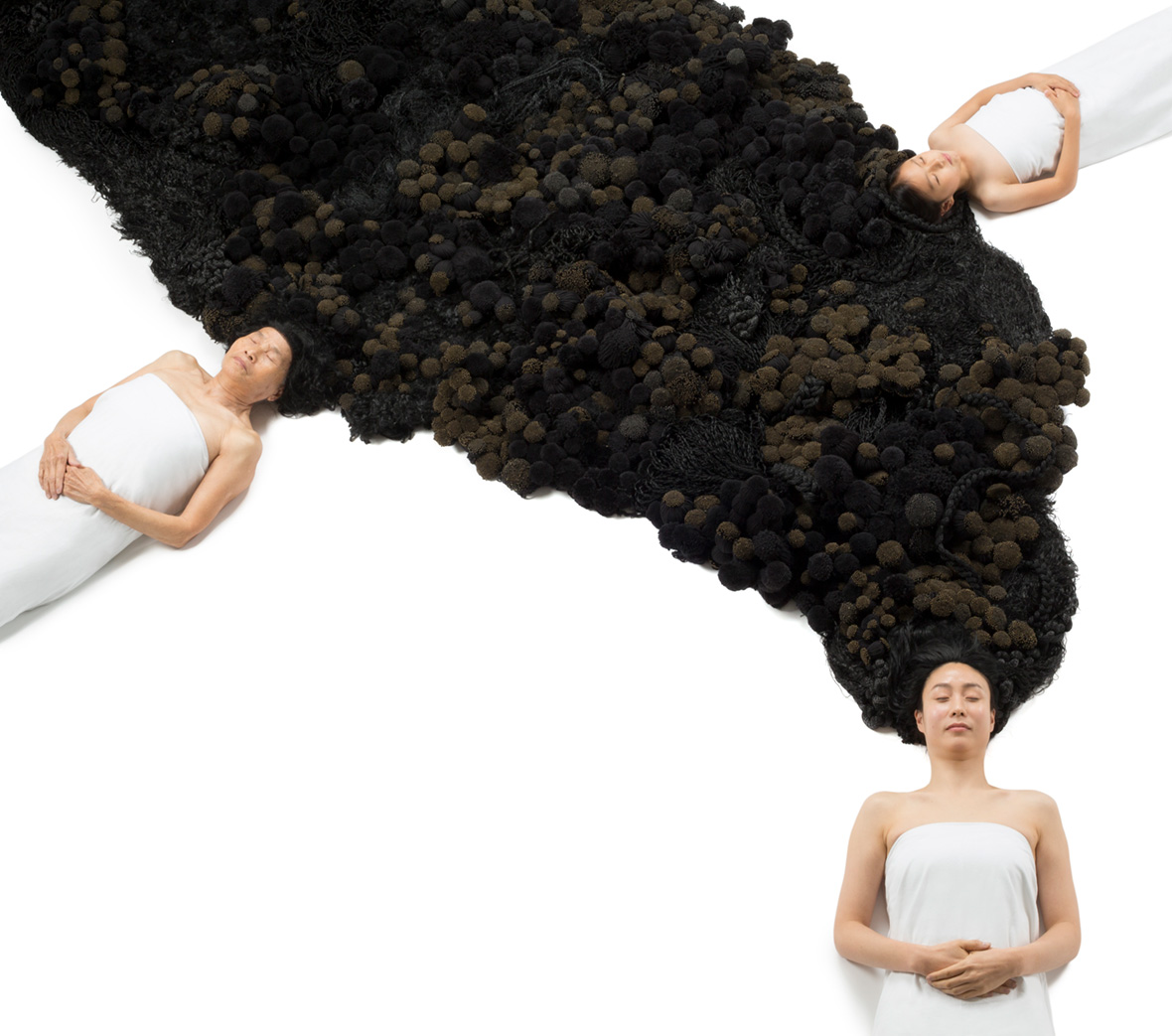
Lang’s newest project, Blooming, is a sequel to Comfort Hair. “Blooming was born from Comfort Hair and visualizes hair as much more than just hair,” she says. “It explores those layered meanings that hair encompasses. Hair is, at times, a stand-in for our identity, and this identity is not static. I see it as something growing and transforming that changes with our stories and unravels as we unfold life’s adventures. I find this concept much more appealing.” Audiences have said Blooming reminds them of flowers, mushrooms, or even sea creatures. “What I want to communicate is growth. Identity is an organism that’s alive, growing, spreading, and blooming.”
Yuni Kim Lang 的最新项目《Blooming》(《绽放》)是《Comfort Hair》的续集。“《Blooming》诞生自《Comfort Hair》,视觉表现上让头发发挥更多想像。”她说,“它探索了头发在不同层面上的意义。有时候,头发是我们身份的替身,但身份并非一成不变。我认为它是会随着我们的经历和生命故事成长而变化的东西。我发现这个概念更具吸引力。“有些观众说《Blooming》让他们联想到花朵、蘑菇、甚至是海洋生物。“我想要传达的是增长的概念。身份是一种有生命、不断成长、向外传播和绽放的有机体。”
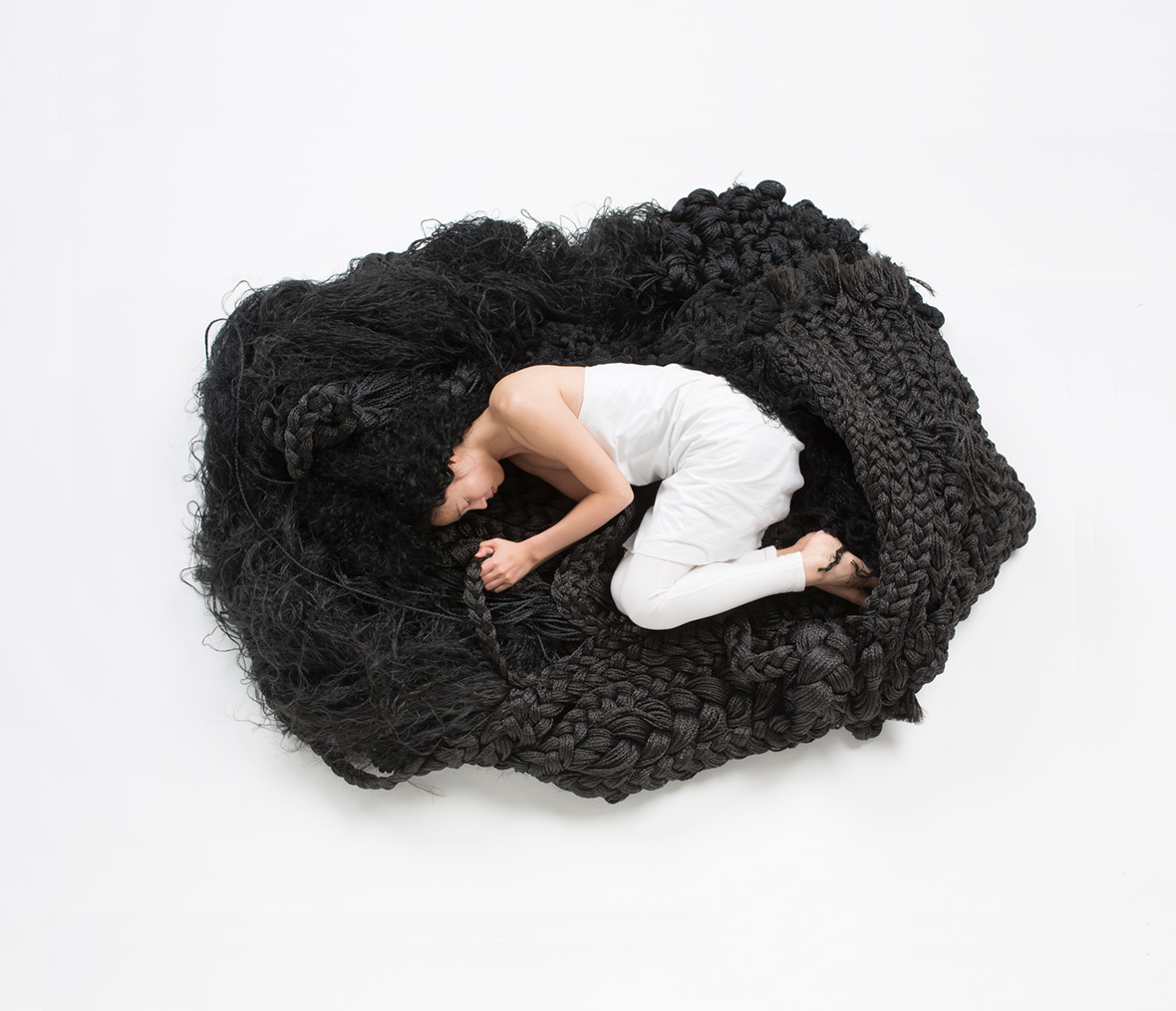
In a few pieces, she doesn’t wear the hair but instead lies in it. The metaphor of hair evolves into a surrounding environment, enveloping a wearer who is not overwhelmed by the pressure but peacefully coexisting with it. Lang, who was once anxious about “not being Korean enough,” has grown into an artist who understands the multifaceted nature of identity, as well as a mother tasked with guiding her boys through the challenges of understanding their heritage. She says hair gives her a platform to talk about the internal struggles she had growing up. “I enjoy talking to my boys about the things I hated and loved about being Korean, and who I am because of those understandings,” she says. Today she serves as a guide through the symbolic seascape of Blooming, both for her children and her audiences.
在几件作品中,她不戴头发,而是躺在头发里。头发的比喻演变成一个周围的环境,包裹着一个没有被外在压力打倒,而是与它和平共处的穿戴者。曾经一度担心“自己不够像韩国人”的 Yuni Kim Lang,已经成长为一个深刻了解身份多重性的艺术家,以及一位母亲,教导儿子去了解他们继承传统的挑战。她说,头发给了她一个平台,讨论成长过程中她内心的挣扎。“我喜欢和我的孩子谈论关于做韩国人我喜欢和讨厌的事,以及因为这些理解,从而去了解我到底是谁。”她说。今天,通过象征性的《Blooming》,她为她的孩子和她的观众提供了方向和指南。

Lang recalls on one memorable encounter with a Korean adoptee who shared her personal story after an exhibition opening. Lang’s story of growing up as a third-culture kid resonated with her, and she explained how she too, often felt lost between Western and Korean cultures. However, they bonded over the fact that they can’t deny they’re Korean—their intense black hair would never allow them to. “The world will always see a Korean girl,” Lang says. Even if they covered their roots, their hair would eventually grow back, a mysterious force always trying to tell its story.
Yuni Kim Lang 回忆起有一次在展览开幕后,遇见一位被领养的韩国人。她分享了个人经历和故事,并提到这样的作品引起她很大的共鸣。她解释自己也是如此作为一个第三文化孩子成长,经常感到迷失于西方和韩国文化之间。 然而,两人都认同自己无法否认她们韩国人的身份——她们明显的黑发绝不允许她们这样做。“世界看到的我将会永远是一个韩国女孩。”她说。即使覆盖了根,头发也会长出来,仿佛丛生着一股神秘力量,总是试图去诉说它的故事。
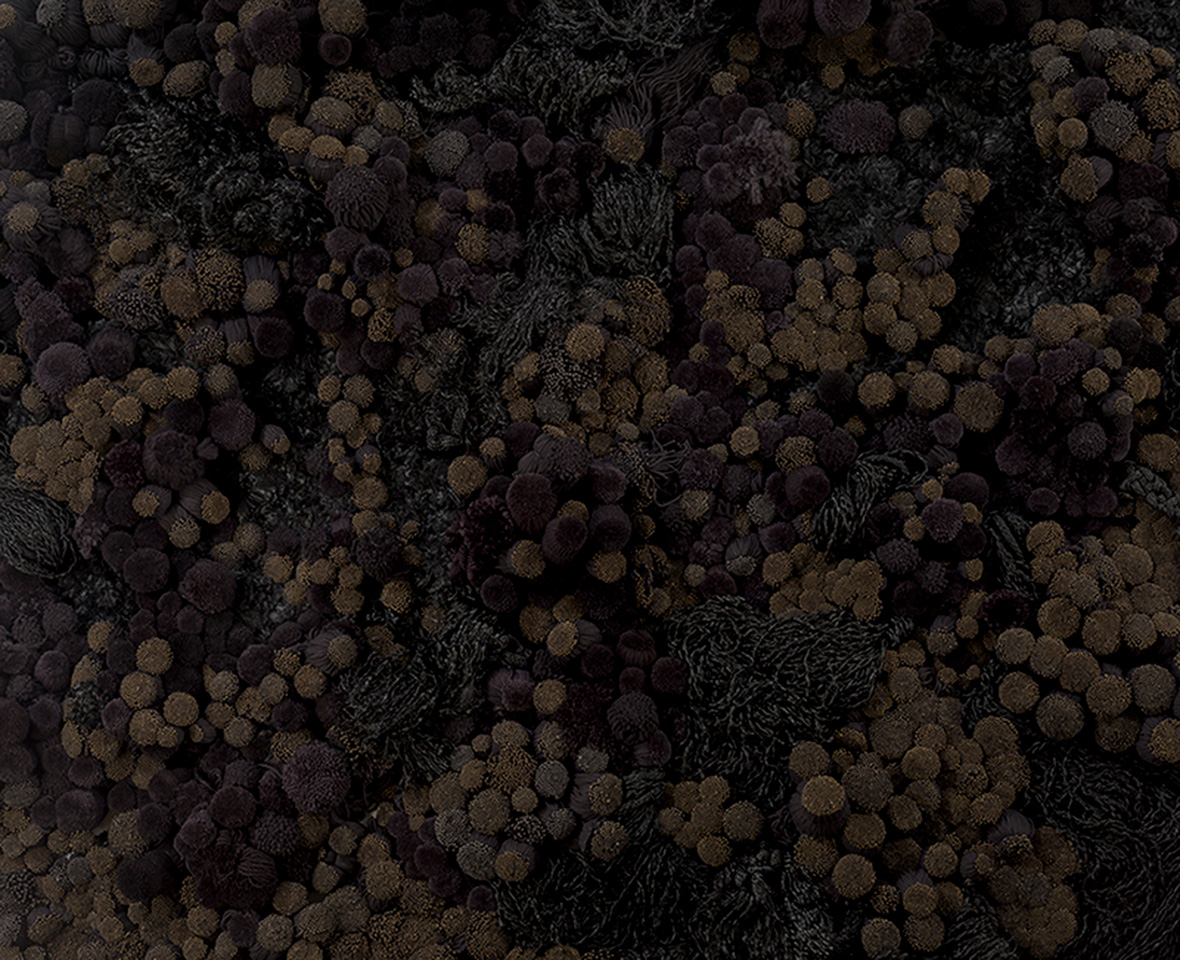
Like our stories? Follow us on Facebook and Instagram.
Website: yunikimlang.com
Instagram: @artist_yunikimlang
Contributor: Eugene Lee
Chinese Translation: Yang Yixuan

